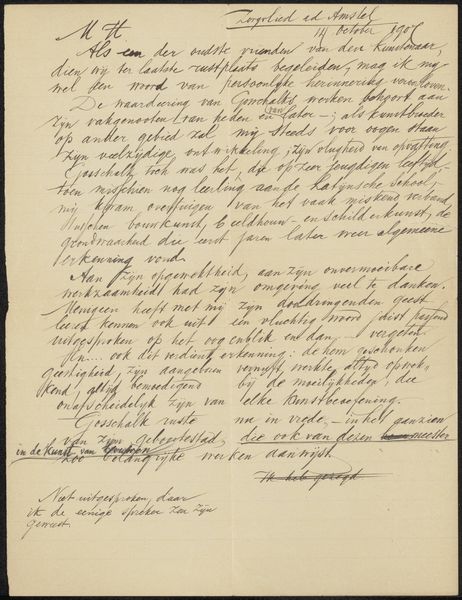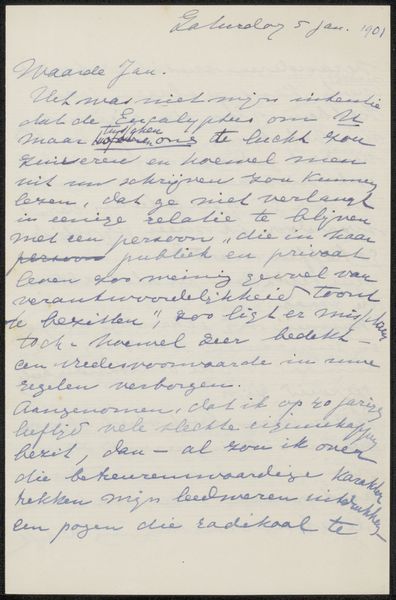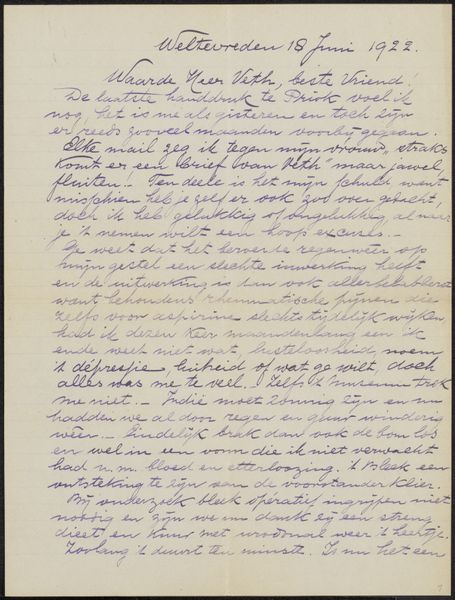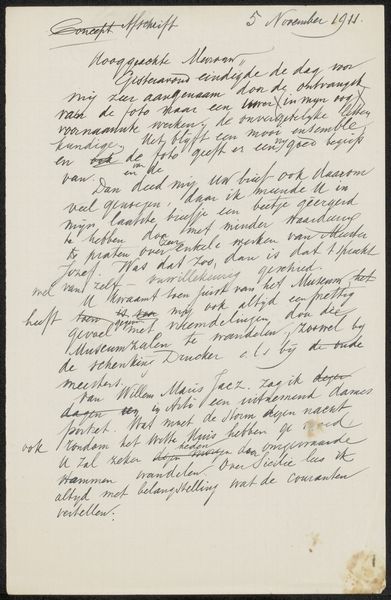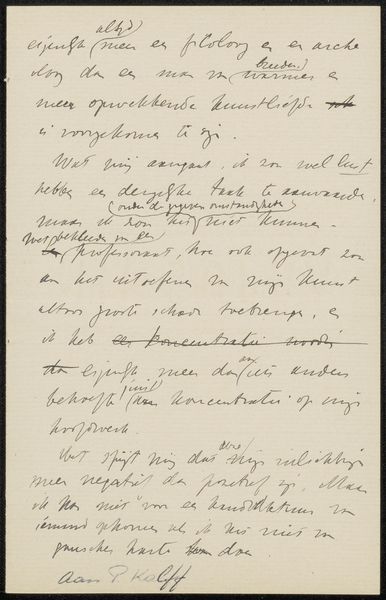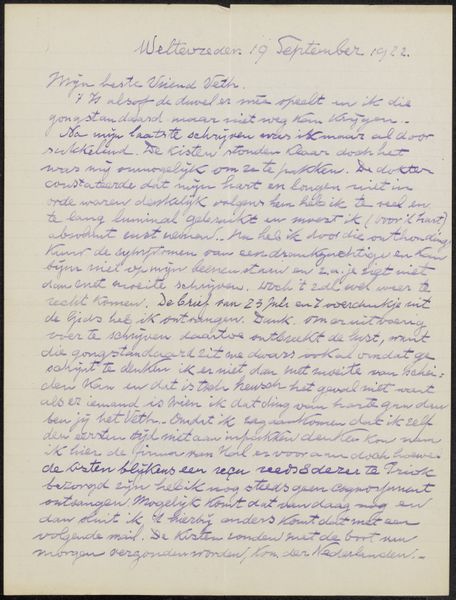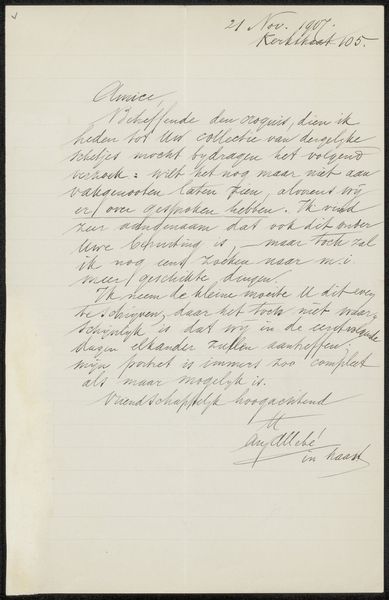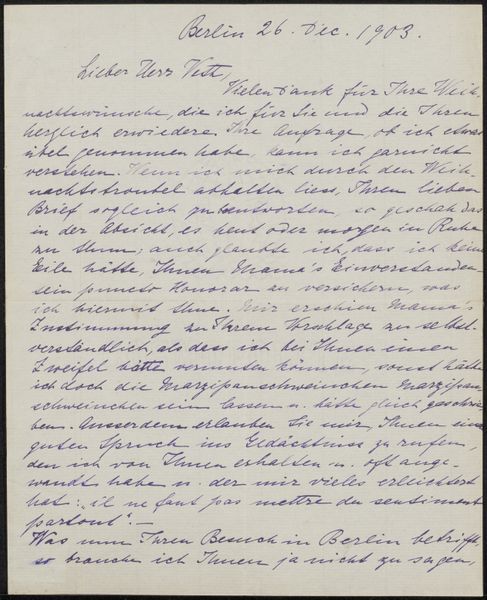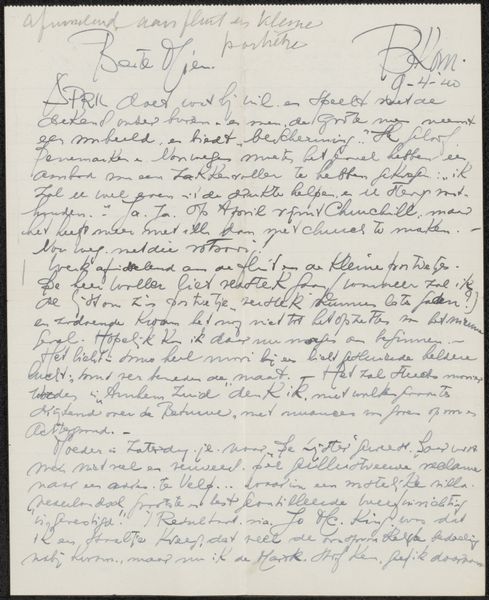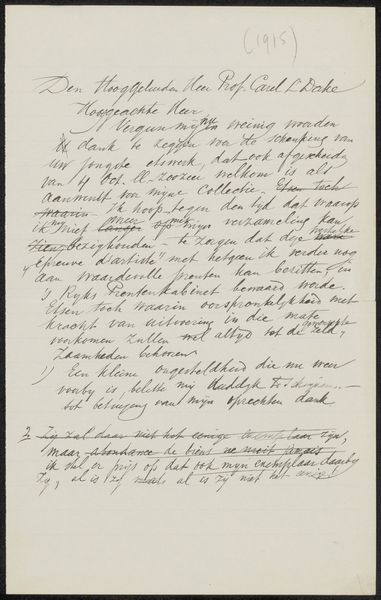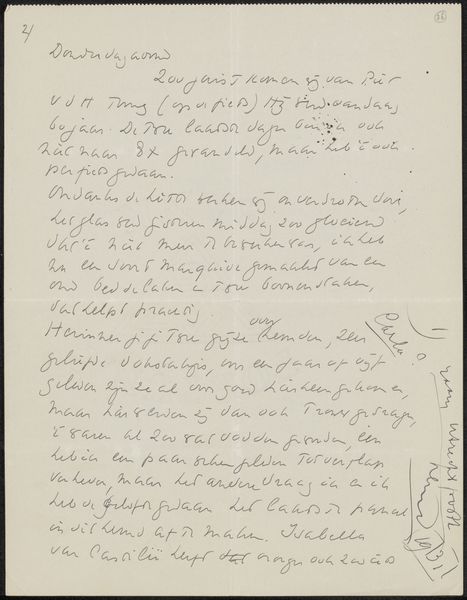
drawing, paper, ink, pen
#
drawing
#
ink paper printed
#
old engraving style
#
hand drawn type
#
paper
#
personal sketchbook
#
ink
#
hand-drawn typeface
#
ink drawing experimentation
#
pen-ink sketch
#
pen work
#
sketchbook drawing
#
pen
#
sketchbook art
Copyright: Rijks Museum: Open Domain
Curator: This work is titled "Aantekening betreffende prenten van Wijnand Otto Jan Nieuwenkamp," which translates to "Notes Regarding Prints by Wijnand Otto Jan Nieuwenkamp." It is dated to after 1919 and appears to be executed in ink on paper. Editor: My immediate reaction is that this feels very personal. Like a page ripped straight from an artist's own notebook. The hand-written script dominates. Curator: Exactly! It offers a peek into the working methods of an artist, capturing details that reveal something about their time. Note the address "Kali Bessar, Batavia"—an old name for Jakarta, Indonesia—which signals the reach of Dutch commercial interests. The text meticulously logs various "proefdruk," or proofs, of prints, noting different states and dates spanning from May to November 1919. It functions almost like an inventory or registry. Editor: The handwritten quality infuses the text with an almost calligraphic energy, a pre-digital aesthetic of documentation that makes it visually rich and quite tactile. Look at the varied pressure and flow in the handwriting – a beautiful symbol of direct, human inscription. What significance would these proofs have held? Curator: They were crucial! Before mass reproduction, proofs were vital for the artist to refine their work and communicate intended states with printers, publishers, or patrons. It tells us about Nieuwenkamp's commitment to his art. This "Aantekening" acts as a vital record but it also subtly highlights the importance of artistic provenance in early 20th century artwork as being a physical, documentable event. Editor: You can really imagine the artist poring over these proofs. The inscription ‘geschenk van den Heer…’ implying a gift from Mr. Wiessing – was he the commissioner? It offers insight into the complex dynamics between artist, patron, and printer which this sheet embodies, even enshrines within this little page. The lined paper and economical use of space feels practical yet evokes this aura of value through its meticulous preservation. Curator: Yes! It presents an informal account deeply embedded in a social and economic network – shedding light on the material and intellectual infrastructures around artistic creation at the time. Editor: It all goes to show, doesn’t it, that even a seemingly straightforward sketchbook page can carry so many layers of symbolic and cultural meaning! Curator: Absolutely. The layers present the processes and the personalities involved within the history of this artwork's creation.
Comments
No comments
Be the first to comment and join the conversation on the ultimate creative platform.
